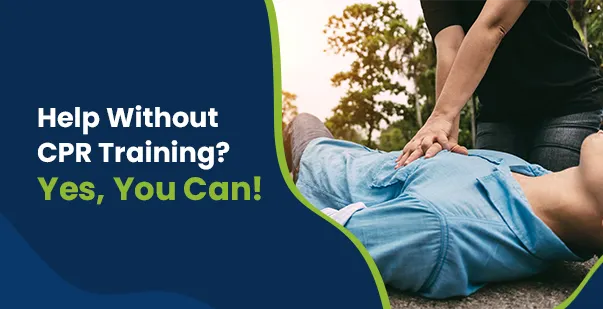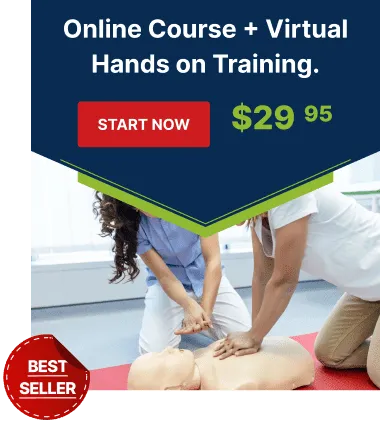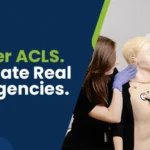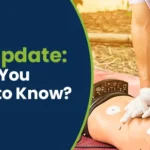Table of Contents:
- Introduction
- Can You Perform CPR if You Are Not Certified?
- Significance of Taking Immediate Action
- What are the Risks Associated with Untrained CPR?
- Is It Illegal To Perform CPR without Certification?
- Basic CPR Techniques for Uncertified Bystanders
- Benefits of Being CPR Certified
- Conclusion: Stay Empowered and Confident to Act in Emergency
Introduction
If a person suffers sudden cardiac arrest, their heart stops beating effectively, and without timely intervention, death can occur within minutes. However, performing CPR (cardiopulmonary resuscitation) can double or triple their chances of survival. CPR helps maintain blood flow to the heart and brain, supporting normal rhythm until more advanced care arrives.
But what if you haven’t been formally trained? Can you perform CPR without certification? Read on to find out!
Can You Perform CPR if You Are Not Certified?
If you want a quick answer to the question ‘Can you do CPR if you are not certified?’, the answer is yes. Anyone can perform CPR. You don’t need certification to administer this life-saving technique to an unresponsive person.
While it is possible to perform CPR without certification, undergoing proper training is recommended. With comprehensive training, you will gain the skills and knowledge necessary to respond effectively to emergencies. However, in situations where no certified individual is available, attempting CPR is better than doing nothing.
Read More: Essential Guide On How To Perform CPR Correctly in Emergencies
Significance of Taking Immediate Action
In emergencies, immediate action can mean the difference between life and death. Yet only 40.2% of out-of-hospital cardiac arrests (OHCA) receive bystander cardiopulmonary resuscitation. Although certification provides credentials, waiting for a certified individual to arrive may delay intervention. Each minute without CPR decreases the victim’s chances of survival, emphasizing the importance of bystander intervention.
Taking prompt action and providing basic assistance can significantly improve survival outcomes. Being aware that you can give CPR if you are not certified empowers you to act in emergencies, fostering a culture of readiness and enhancing outcomes for those in distress.
What are the Risks Associated with Untrained CPR?
Even though you know the answer to ‘can I do CPR without certification?’ you need to understand that incorrect procedures may pose risks to the victim. Some of the potential dangers associated with improperly administered CPR include:
Broken Ribs and Internal Injuries
Chest compressions performed at an incorrect depth or rate can cause broken or fractured ribs due to excessive force. This risk is higher in elderly patients and infants with fragile bones. Broken ribs may also damage internal organs, such as the lungs.
Air Embolism and Visceral Injuries
Incorrect hand placement, often due to lack of training, may lead to air embolism or visceral injuries. Air embolism occurs when air bubbles enter the bloodstream and can be fatal if they reach the heart or brain. Visceral injuries complicate the recovery process for the victim.
Ineffective Resuscitation Efforts
Proper CPR restores blood flow to the brain and heart. However, without training, incorrect techniques can cause adverse effects. For instance, blowing air into the stomach instead of aligning with the victim’s breathing pattern can diminish the effectiveness of rescue breaths and worsen the victim’s condition.
Risk of Vomiting and Aspirations
Victims might vomit if incorrect CPR techniques are performed on them. If they are unconscious, this could lead to the aspiration of vomit into their lungs, causing serious lung infections and other complications in respiratory function.
Is It Illegal To Perform CPR without Certification?
It is possible to sue an individual without certification for performing CPR. However, the probability is low, thanks to Good Samaritan laws. These laws protect untrained individuals who help in emergencies from potential lawsuits. They are designed to shield those who offer emergency assistance in good faith from liability for negligence.
These laws encourage bystanders to assist in emergencies without fear of legal repercussions. However, Good Samaritan laws vary from state to state, so make sure to understand the regulations in your jurisdiction.
Basic CPR Techniques for Uncertified Bystanders
Now that you know the answer to ‘Can anyone perform CPR?’ it’s time to learn the basic techniques. Many people feel helpless during a cardiac emergency because they don’t know how to perform CPR or their training is outdated.
Hands-only CPR, or compression-only CPR, is a simplified form of CPR that focuses solely on chest compressions without rescue breaths. This technique is particularly suitable for untrained individuals who may feel unsure or uncomfortable about performing rescue breaths.
Here’s how you can administer CPR if you don’t have training.
Call 911 Immediately
The first step is to contact emergency services, as trained responders can provide the best possible care. Provide your exact location, and the operator may guide you on performing CPR effectively.
Know the Signs for CPR
Once you have ensured the safety of your surroundings, check out the common signs in the victims so that you can act confidently. If you find the person isn’t breathing or only gasping, you can perform CPR. If you find the victim has chest pain, pressure, or discomfort, it could be a sign of a heart issue and need immediate CPR intervention.
Check whether the Victim is Breathing Effectively
Place your ear close to the victim’s mouth and listen for a few seconds. If you do not hear breathing, begin CPR immediately. If the person is breathing but unconscious, do not perform CPR. Instead, place them in a recovery position and monitor their breathing.
Place your hands on the Centre of their Chest.
Place one hand on top of the other in the center of the victim’s chest, just above the sternum and between the nipples. This position allows you to apply adequate pressure directly over the heart, increasing the effectiveness of each compression.
Push Hard and Fast
Press down on the victim’s chest about 2 inches at a steady rate of 100–120 beats per minute. Maintaining the correct depth and rate helps pump blood effectively throughout the victim’s body, ensuring a continuous supply of oxygen to vital organs.
Keep Continuing CPR Until Professionals Arrive
Repeat the CPR cycle of 30 chest compressions (and 2 rescue breaths if you are familiar with the technique) at a steady pace until professional help arrives or the victim shows signs of recovery. If you feel fatigued or need assistance, do not hesitate to enlist the help of another bystander if available.
Benefits of Being CPR Certified
Even though you know the answer to the question, can you do CPR without being certified, keep in mind that formal training can be invaluable. The benefits of being CPR-certified go beyond saving a life. Let’s explore some of the advantages of acquiring CPR certification below.
You will Have the Confidence to Act in Emergencies.
When you have valid CPR certification, you will have the technical knowledge to perform chest compressions and rescue breaths. It will add to your confidence level to act swiftly in high-pressure situations. While untrained individuals may panic, being certified equips you to respond calmly and effectively. From checking the victim’s condition to calling for help, you will understand every CPR step and make informed decisions.
You will be able to Recognize Emergencies.
If a person suddenly collapses or becomes unconscious, untrained bystanders may struggle to decide how to respond. Without proper training, uncertainties may arise about whether to perform CPR or offer other assistance. However, when you are CPR-certified, you will learn to identify emergencies that require CPR. It will help you to act promptly and decisively, giving the victim a better chance of survival.
You will Learn to Use AED
An AED (Automated External Defibrillator) is a portable medical device used in sudden cardiac arrest emergencies. Using the device, you can analyze the victim’s heart rhythm and deliver an electrical shock, if needed, to restore their normal rhythm. Proper CPR training includes learning how AEDs work, where to find them, and how to use them, which increases the likelihood of a successful outcome.
Read More: What Is a Defibrillator Used For? Understanding AED Function
Conclusion: Stay Empowered and Confident to Act in Emergency
Every individual has the potential to save a life in an emergency situation, even without formal training. While certification provides valuable skills, any attempt to help is better than no action at all. Ultimately, the answer to ‘Can you perform CPR without certification’ is clear: Yes, you can perform CPR even if you are not trained. It empowers untrained individuals to intervene and take action can significantly improve outcomes for those in need. However, undergoing get properly recertified in BLS enhances your ability to provide effective assistance during emergencies.
References
- Can You Perform CPR If You Are Not Certified?
- Legal Side of CPR | CPR Training and what you should know.
- Legal Implications of Performing CPR Without Certification
- Can You Do CPR Without Formal CPR Training?
- CPR Myths | The Response Institute | CPR Consultants
- How to perform CPR: Guidelines, procedure, and ratio
